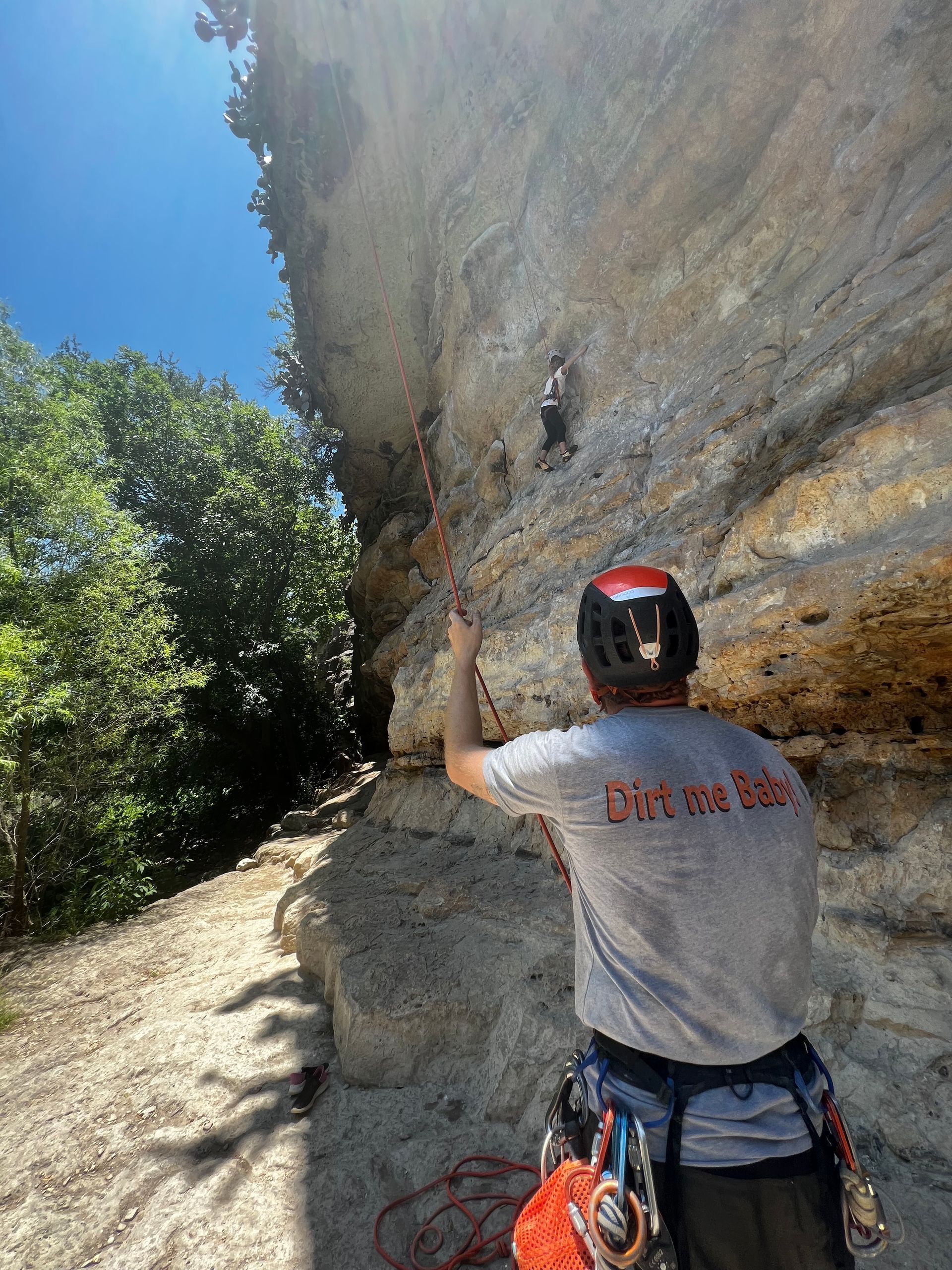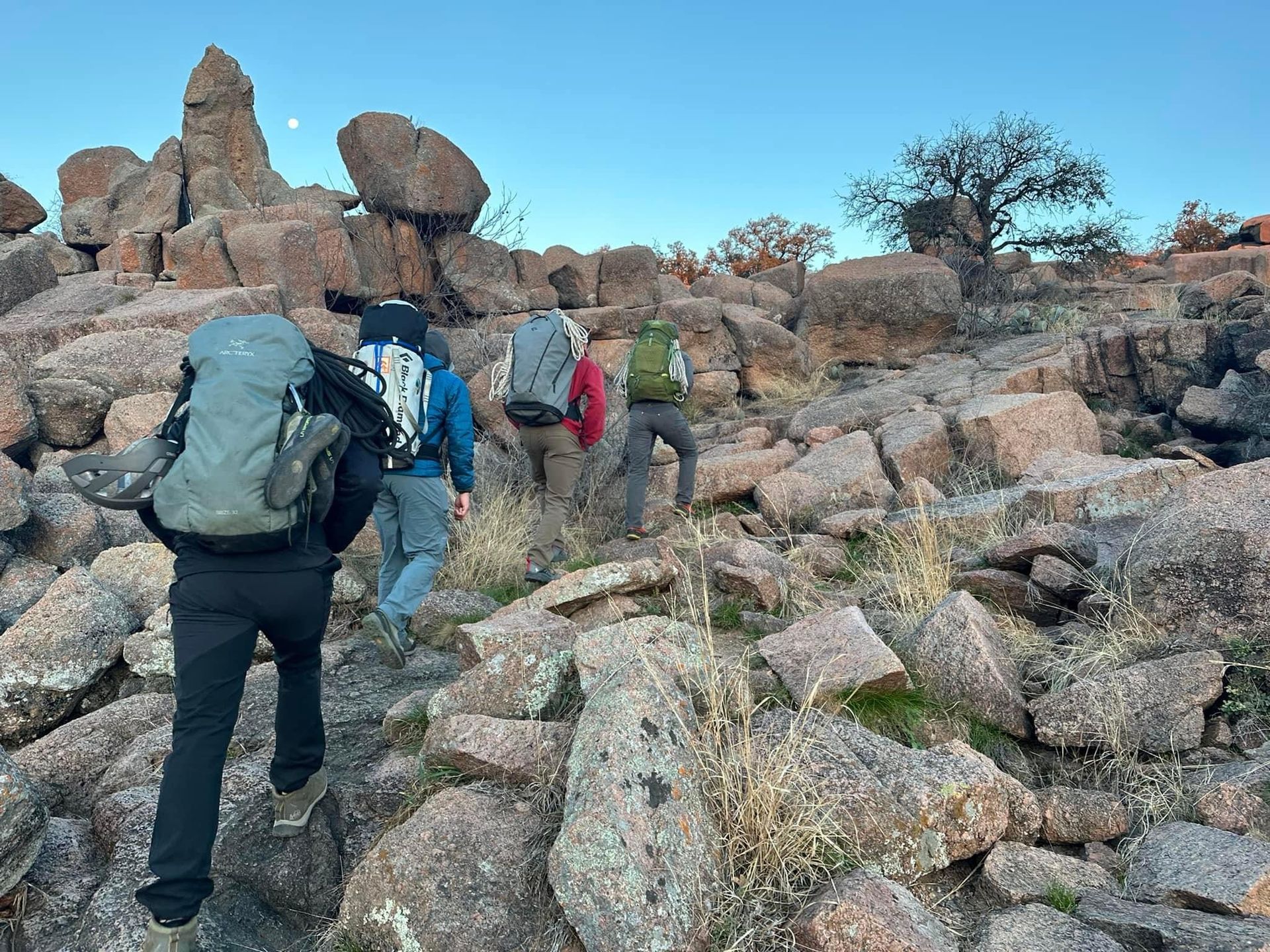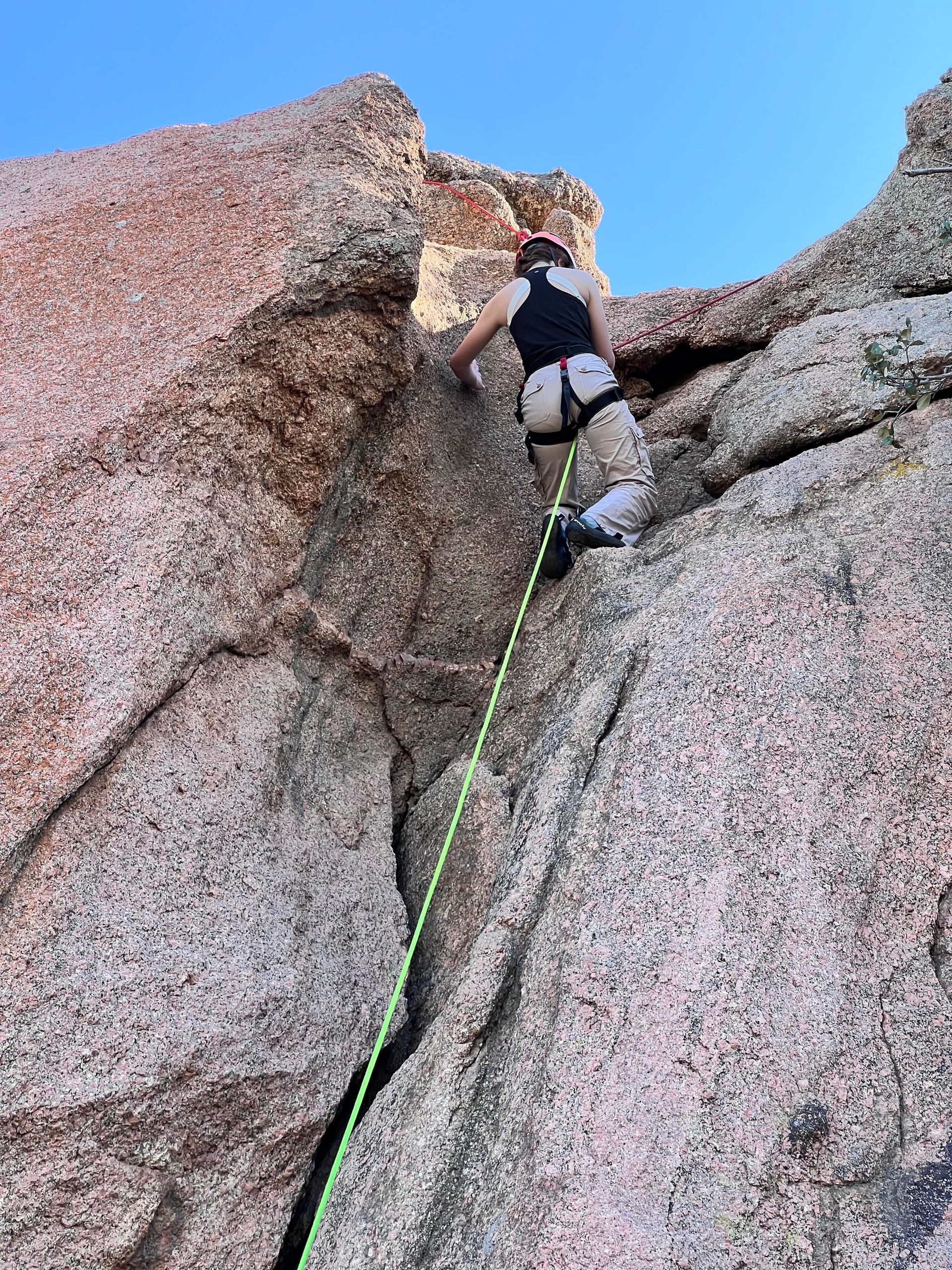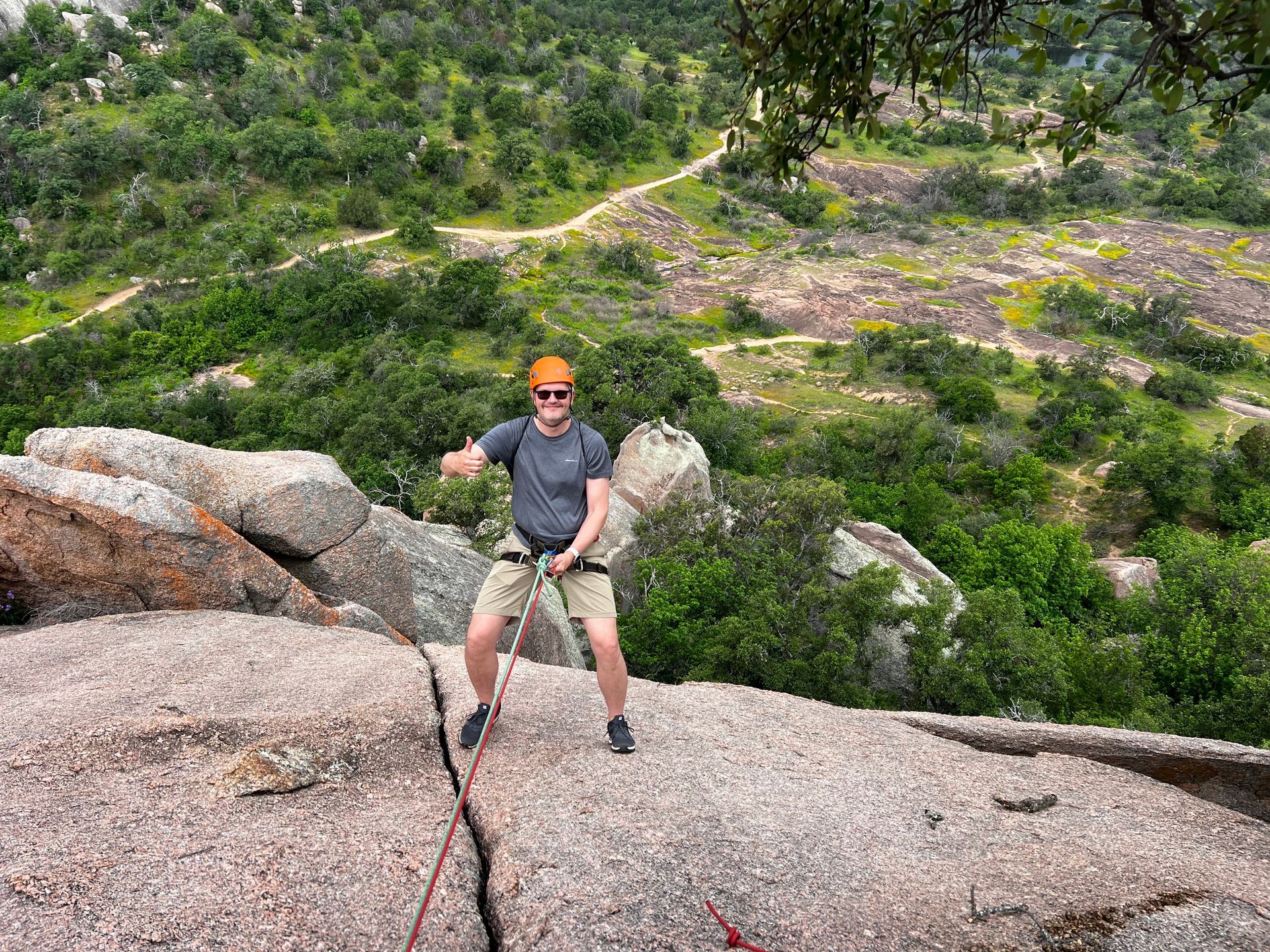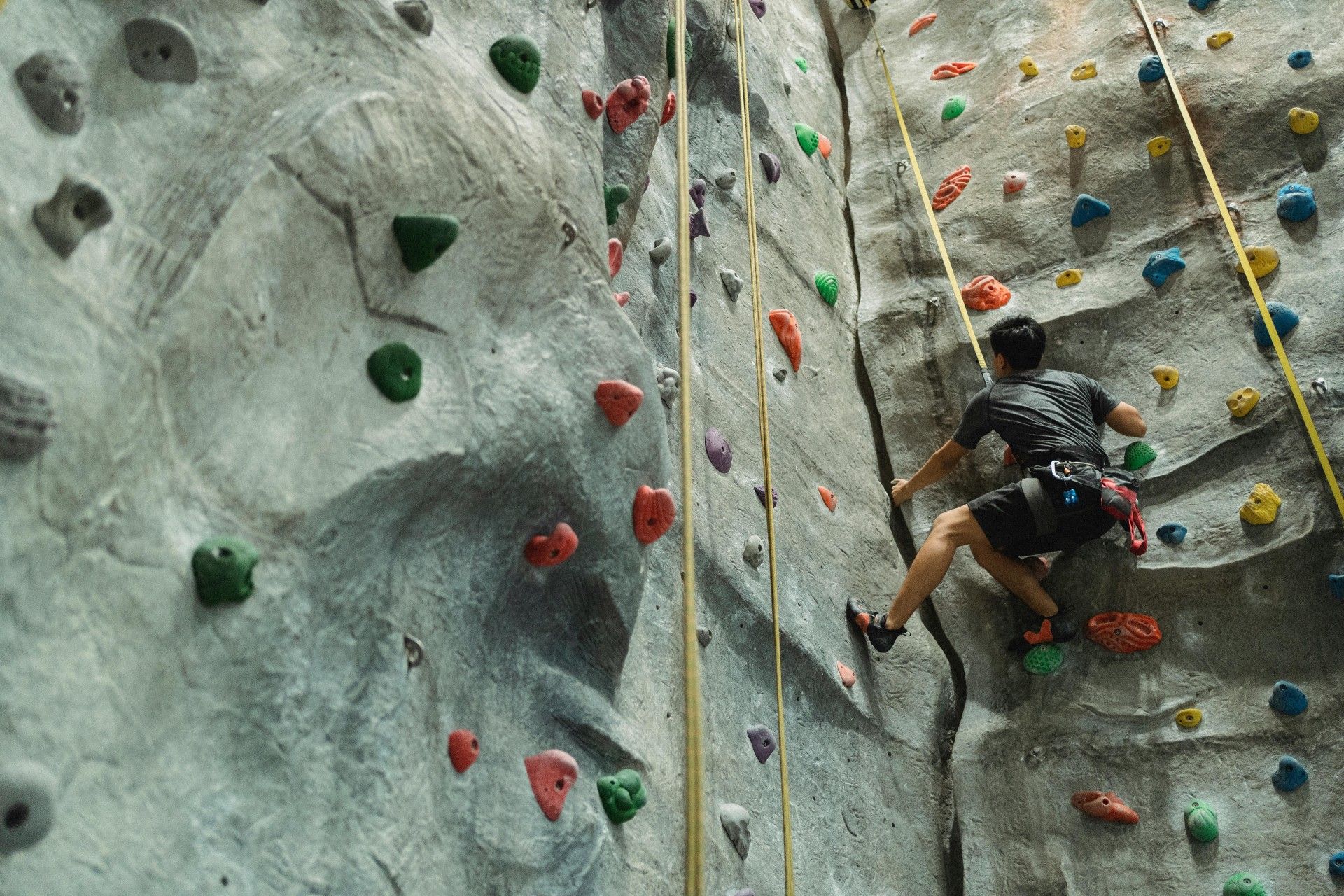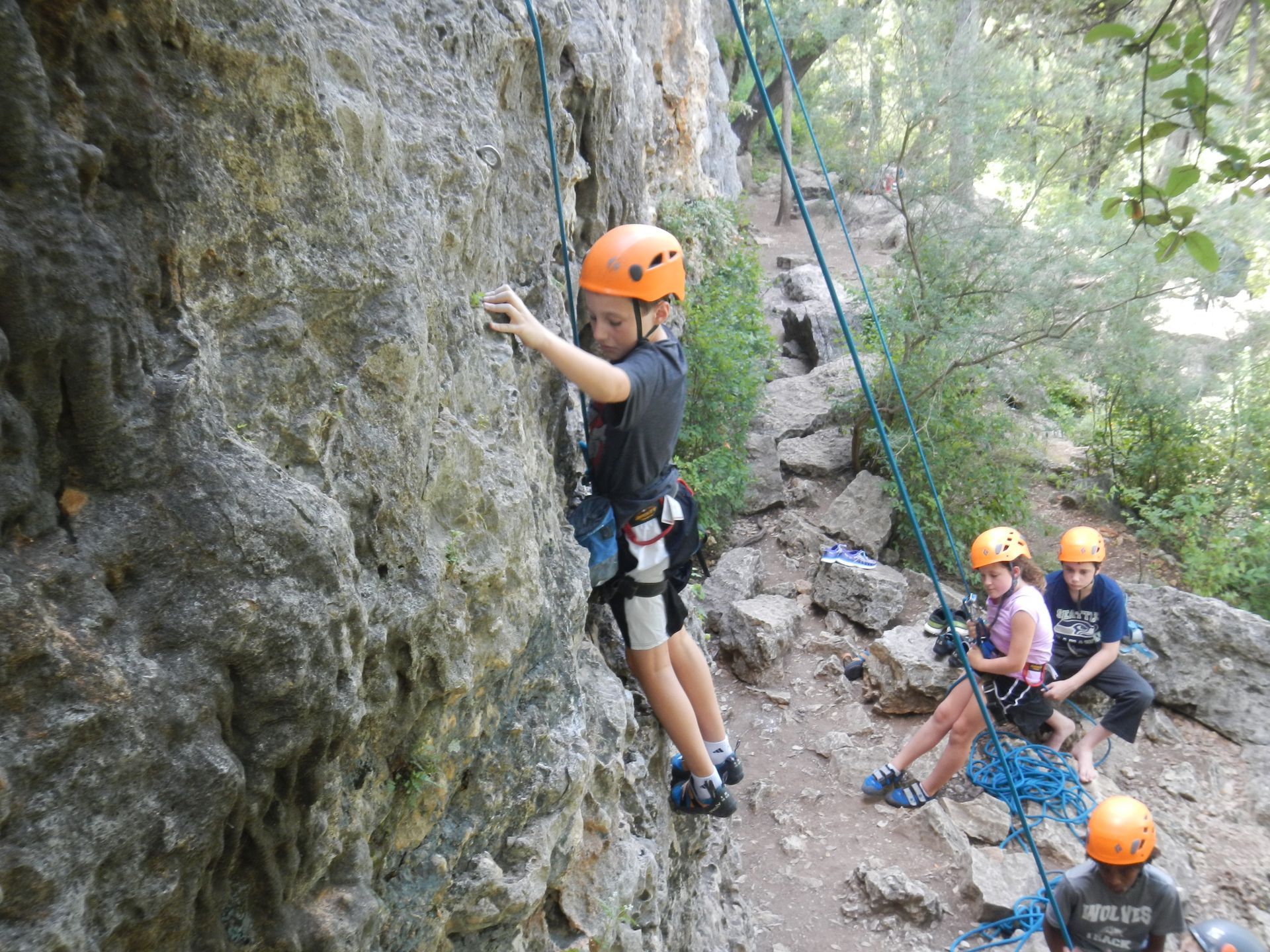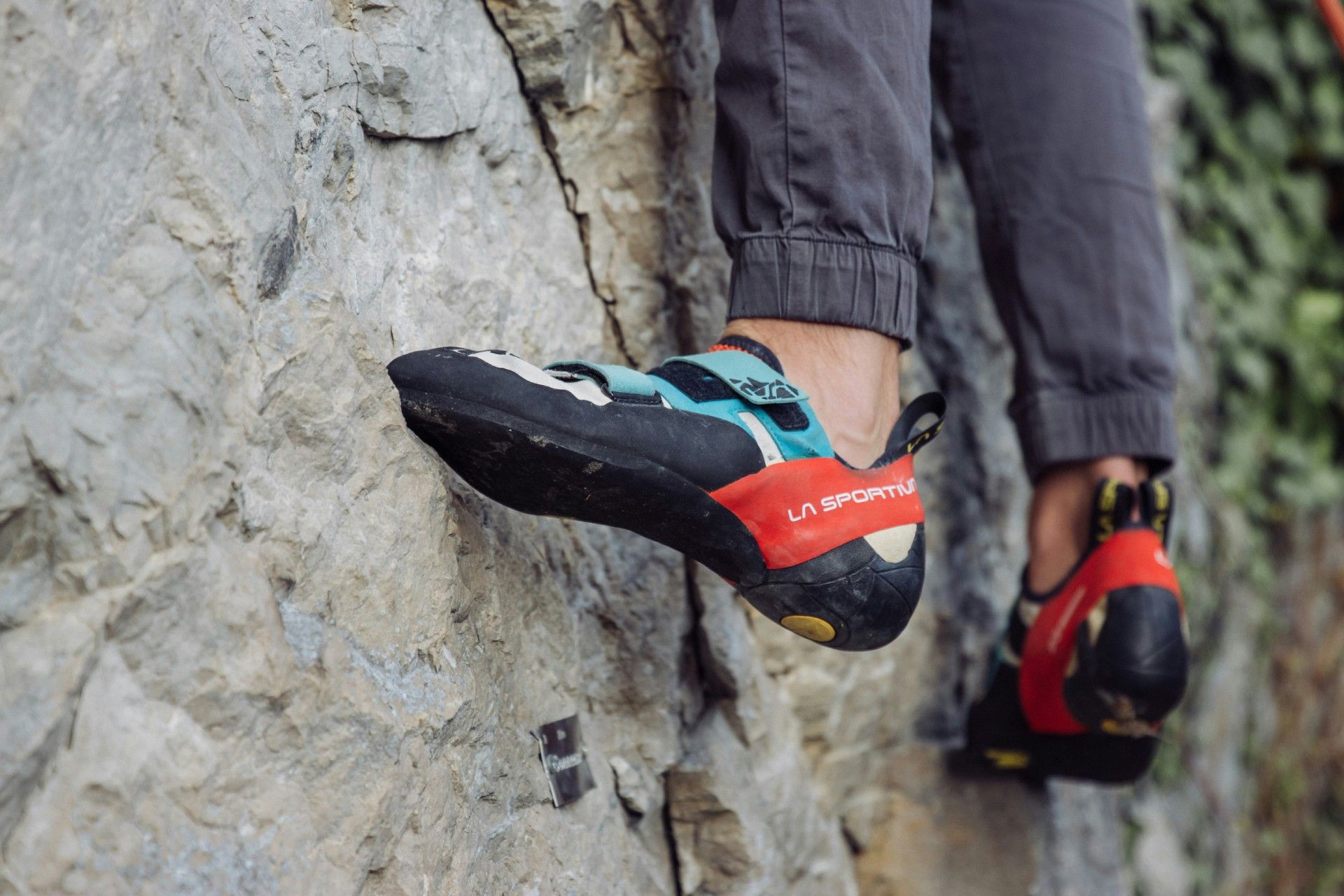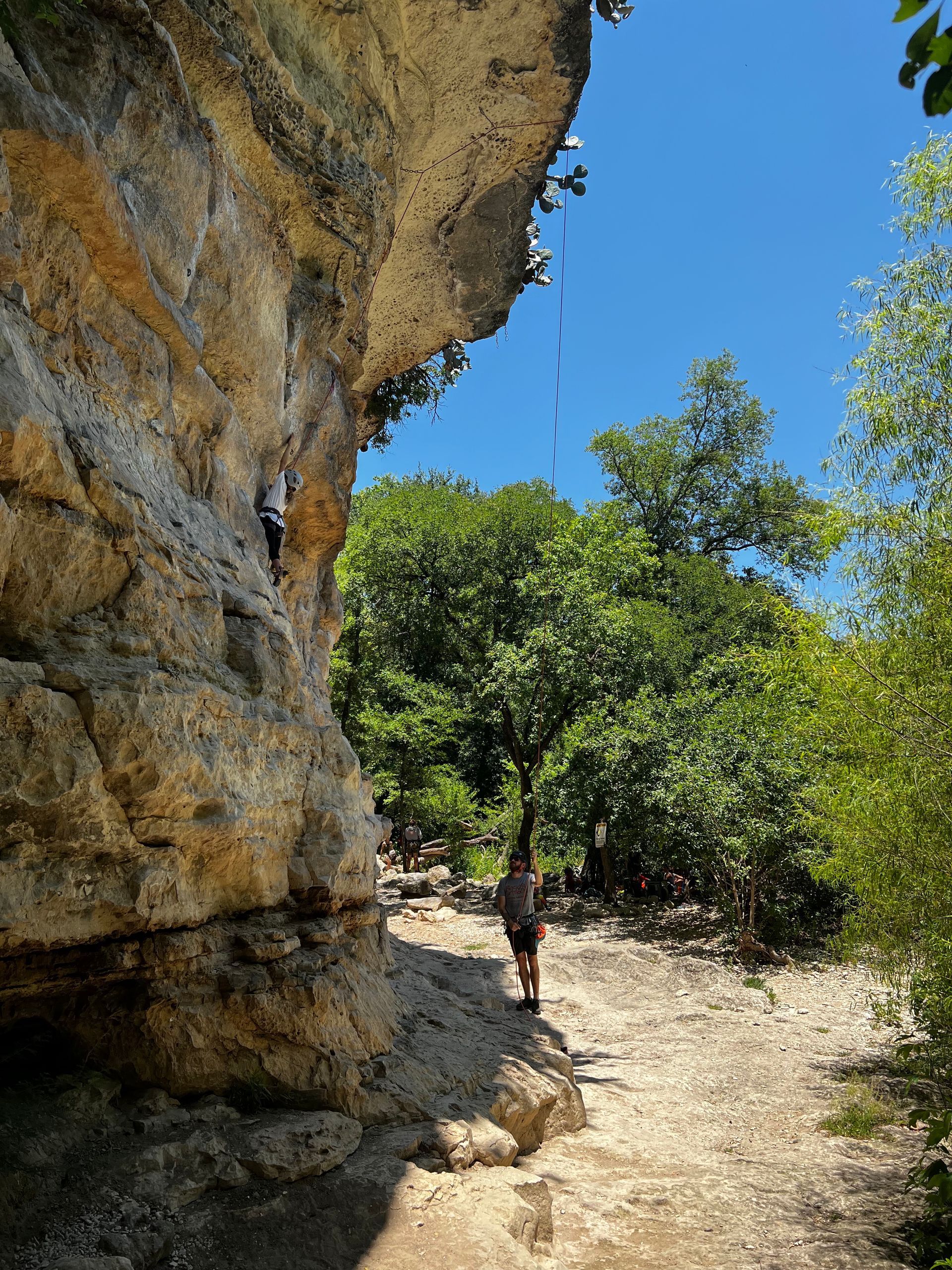Abseiling vs Rappelling: Why Climbers Use Different Words
If you’ve ever looked into climbing or outdoor adventures, you may have come across two words that seem to mean the same thing: rappelling and abseiling. But are they truly the same? Or is there a subtle abseil or rappel difference?
Many beginners ask questions like: “What is abseiling?” or “What is repelling?” (yes, even the spelling gets confusing: repeling, rapellin, abselling).
In this guide, we define these terms, explain their history, compare the techniques, and highlight how you can safely experience them with expert guides at
Rock About Climbing Adventures.
Key Takeaways
- Abseiling and rappelling mean the same thing — both describe the controlled descent down a rope using a harness, rope, and belay device; “rappelling” is used in the U.S., while “abseiling” is preferred in the U.K., Europe, and Australia.
- The main difference is geography, not technique. Climbers worldwide perform the same motion, but terminology changes based on region and language roots (French
rappeler vs. German
abseilen).
- Both are essential parts of rock climbing and canyoneering. Climbers ascend using rock climbing techniques and descend through abseiling or rappelling, often on the same route.
- Safety practices are universal. Always double-check knots, anchors, and wear a helmet; beginners should learn from certified guides before attempting abseiling or rappelling alone.
- Rock About Climbing Adventures offers guided rappelling in Texas. Perfect for beginners and outdoor enthusiasts, their professional guides make learning abseiling or rappelling safe, fun, and unforgettable.
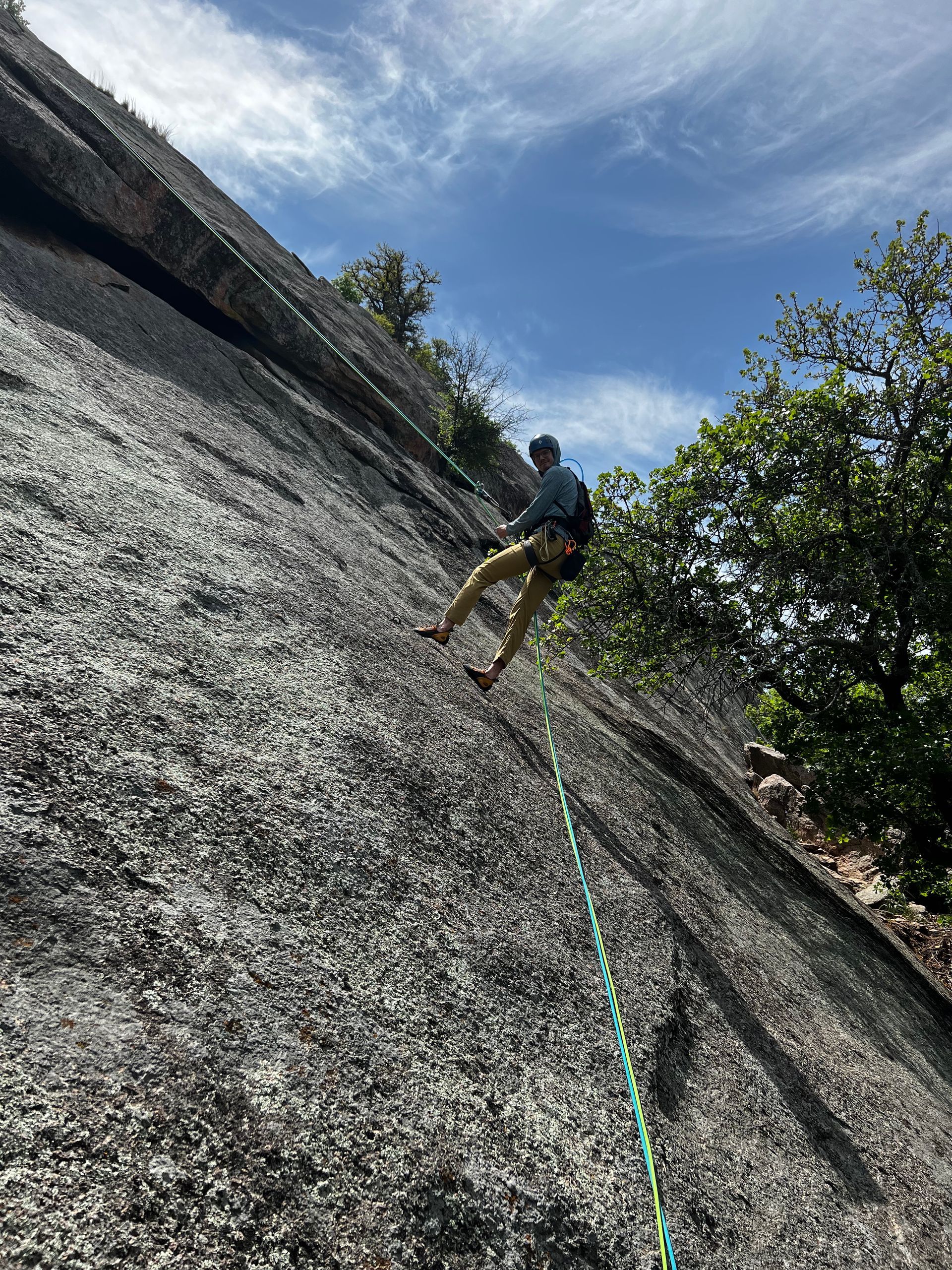
What is Rappelling? (Rappelling Definition)
Rappelling refers to the controlled descent of a rope down a cliff, rock face, or structure.
- Rappelling definition: The process of descending a vertical surface using a rope, harness, and belay device.
- The word comes from the French “rappeler”, meaning “to pull through” or “recall.”
- In the United States, climbers almost always say “rappelling.”
Common uses of rappelling include:
- Descending after a rock climb
- Exploring canyons (see our canyoneering adventures for guided descents)
- Mountain rescue operations
- Military or tactical rappelling
When someone says they are “going rappelling,” they are talking about lowering themselves down a vertical drop using ropes and specialized gear.
What is Abseiling? (Abseiling Definition and Meaning)
Across Europe, Australia, and the UK, the same practice is known as abseiling. The term comes from the German word “abseilen”, meaning “to rope down.”
- Abseiling meaning and definition of abseil: Controlled rope descent down a vertical drop.
- Variations include abseils, rope abseiling, and abseiling down a cliff.
- Related terms include abseil rappel, rappel abseil, abseil synonym, and rappel synonym.
Key notes:
- What is abseiling? It is simply another name for rappelling.
- Abseiling sport: Used both recreationally in adventure tourism and professionally in rescue work or industrial climbing.
- In guidebooks from the UK or Europe, you will find “abseil” where Americans would see “rappel.”
Whether you say rappelling or abseiling, the meaning is the same.
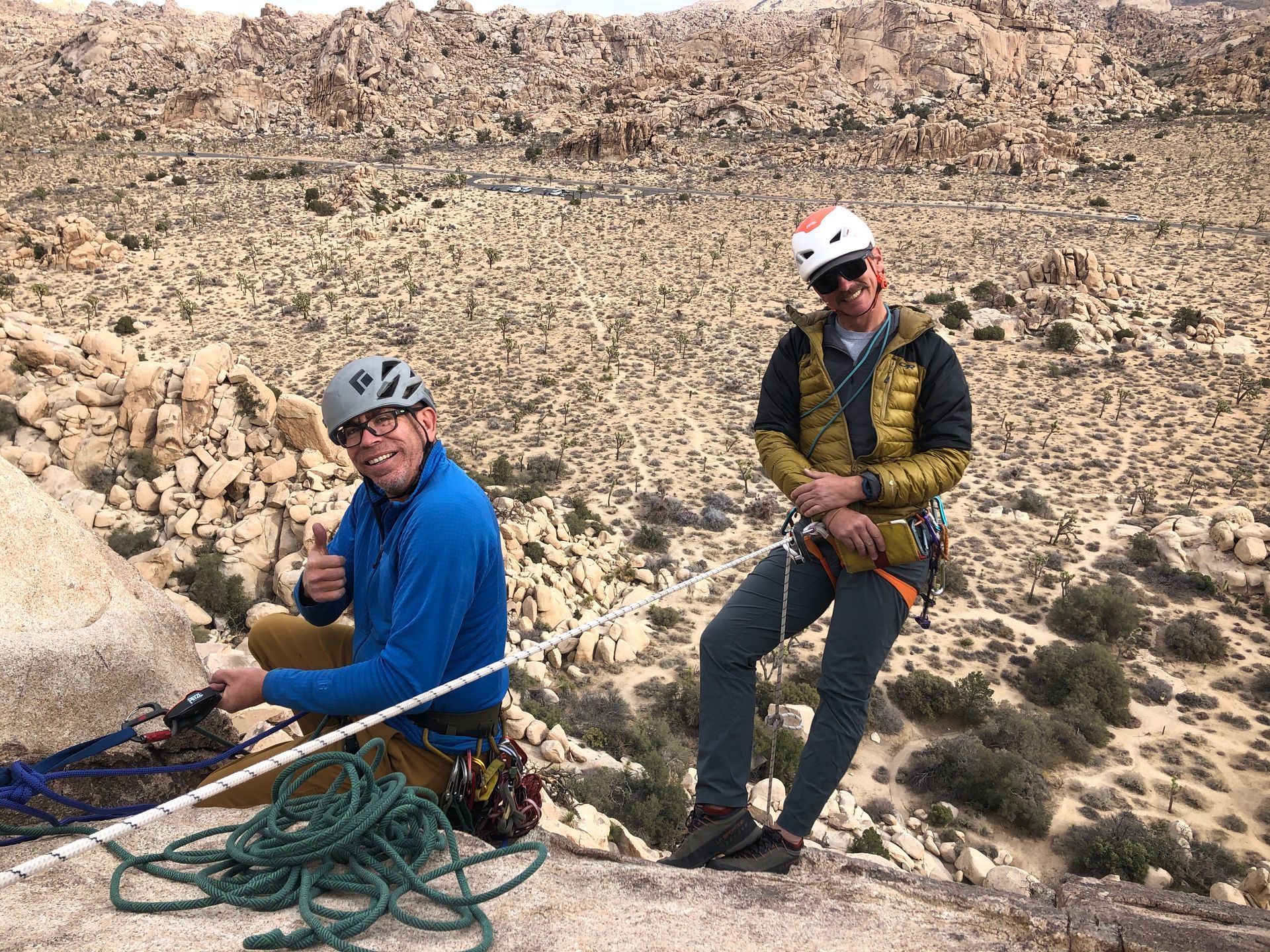
Rappelling vs Abseiling: Same Move, Different Word
So, is there an actual abseiling vs rappel difference? The short answer is no.
- Technique: Both involve descending a rope using a harness, belay or rappel device, and safety checks.
- Language:
The only real difference is geography.
| Term | Region | Example Use Case |
|---|---|---|
| Rappel | U.S., Canada | “We’ll rappel down after the climb.” |
| Abseil | U.K., EU, AU | “You’ll abseil down this side of the cliff.” |
In international rescue or climbing training, instructors often use both terms so teams from different regions understand each other.
Abseiling vs Rock Climbing
Another common question is the difference between abseiling and rock climbing.
- Rock climbing refers to ascending a rock face using strength, technique, and protective gear.
- Abseiling or rappelling refers to descending safely using ropes and controlled movements.
Think of them as complementary activities. You climb up, then you abseil or rappel back down.
Rope Abseiling and Essential Gear
Whether you call it rappelling, abseiling, or even misspell it as rapellin, the equipment remains the same.
Essential gear for abseiling and rappelling:
- Rappel rope (dynamic or static, depending on activity)
- Harness that fits securely
- Belay or rappel device such as an ATC or figure-8
- Helmet for protection against falling debris
- Anchor system at the top of the descent
Some people say rope abseiling to emphasize the rope system, but all abseiling by definition involves rope.
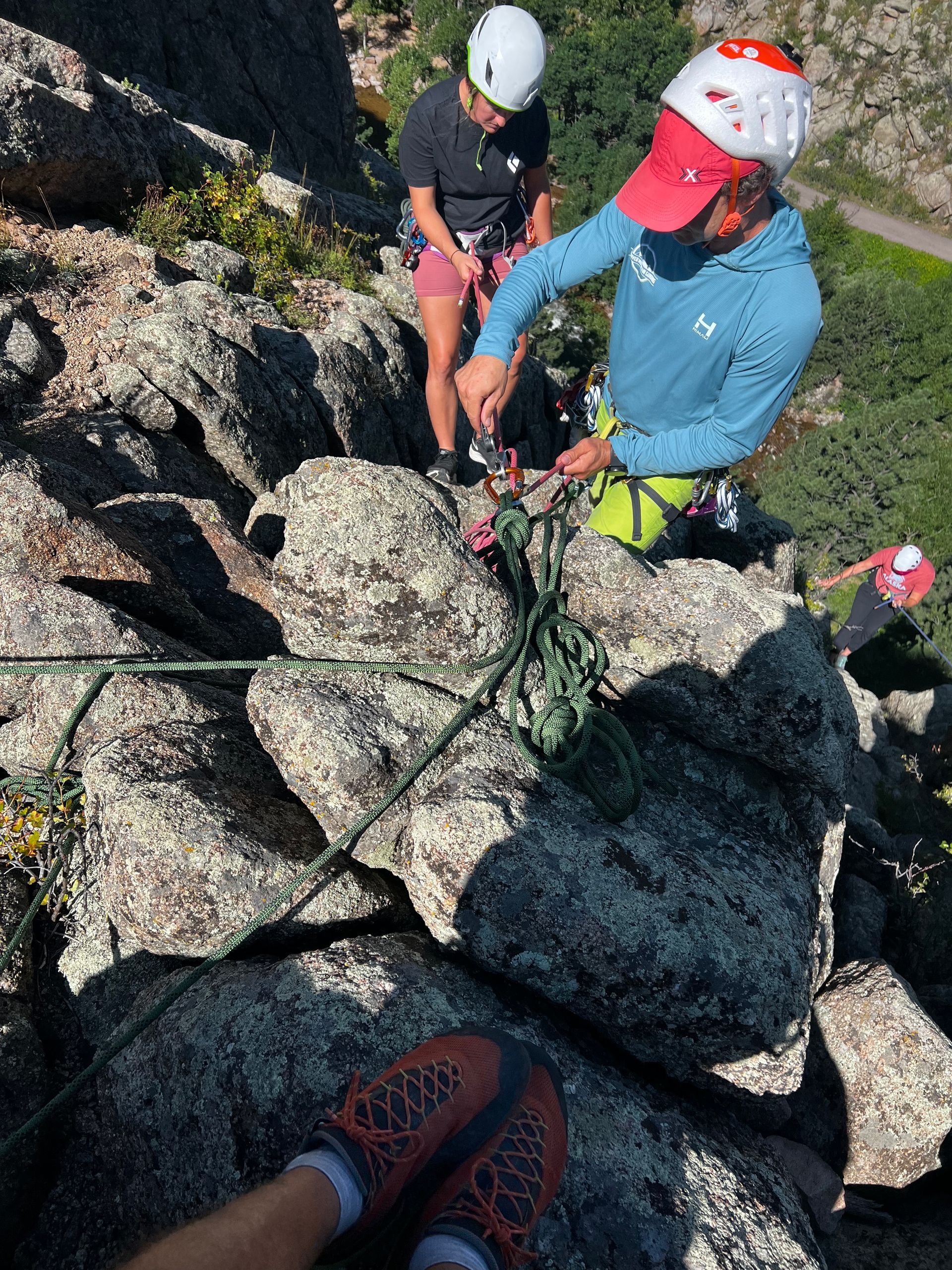
Common Misspellings and Alternate Terms
Beginners often search for climbing terms with incorrect spellings. These include:
- Abselling instead of abseiling
- Repeling or repelling meaning instead of rappelling
- Rapellin or rapelling instead of rappelling
- Rappelling rappelling which is usually a duplicated error
No matter how you spell it, climbers will know you mean controlled rope descents. If in doubt, use “rappelling” in the U.S. and “abseiling” in the U.K. or Europe.
Safety Best Practices for Abseiling and Rappelling
Safety is the same regardless of whether you call it abseiling or rappelling. Follow these best practices:
- Check your anchors. Ensure the rope is secured properly.
- Double-check knots. Use a figure-8 or other reliable knot.
- Use a backup system. Prusik knots or assisted-braking devices add redundancy.
- Wear a helmet. Protection against falling rocks is essential.
- Learn from professionals. Beginners should not attempt abseiling or rappelling without expert guidance.
(If you’re new to the sport, our beginner rock climbing course is the perfect place to start learning the basics safely)
Experience Rappelling in Texas with Rock About Climbing Adventures
Now that you know the difference between abseiling and rappelling, it is time to experience it for yourself. At Rock About Climbing Adventures, our professional guides provide safe, beginner-friendly instruction and all the necessary gear at some of Texas’s best climbing destinations, including Enchanted Rock and the Hill Country. You can also enjoy scenic Lake Travis climbing and rappelling trips, perfect for summer adventures.
Whether you call it abseiling or rappelling, we will help you enjoy the thrill of descending cliffs with confidence, so book your adventure today and start your journey with our Canyoneering & Rappelling Adventure. Explore all our climbing locations across Texas to find the perfect place for your next outdoor experience.
Frequently Asked Questions
Here are the most common questions people ask about the
difference between abseiling and rappelling, including meaning, origin, and safe climbing practices.
What is the difference between abseiling and rappelling?
There’s no real difference between abseiling and rappelling — both describe descending a rope down a cliff or structure using a harness and belay device. The only variation is regional: “rappelling” is used in the U.S., while “abseiling” is common in the U.K., Europe, and Australia.
Where do the words abseiling and rappelling come from?
“Rappelling” comes from the French word rappeler, meaning “to pull through,” while “abseiling” originates from the German abseilen, meaning “to rope down.” Both terms describe the same controlled rope descent technique used in climbing and rescue work.
What is abseiling in simple terms?
Abseiling is the act of safely descending a vertical surface, like a cliff or rock wall, using a rope and harness. It’s commonly used in climbing, adventure tourism, and rescue operations to reach the ground from high places.
What is rappelling used for?
Rappelling is used to descend safely after a climb, during canyoning adventures, in mountain rescues, and for military or tactical operations. It allows controlled movement down steep terrain that would otherwise be dangerous or impossible to walk down.
Is abseiling or rappelling dangerous?
Both are safe when performed with proper training and equipment. Risks mainly come from poor anchors, incorrect knots, or lack of experience. Beginners should always learn from certified guides or instructors before attempting an independent descent.
What equipment do you need for abseiling or rappelling?
You’ll need a climbing rope, secure harness, helmet, belay or rappel device, and an anchor system at the top of the descent. Optional safety backups like a prusik knot or assisted-braking device can add extra protection during your descent.
How does abseiling differ from rock climbing?
Rock climbing involves ascending a rock face using hands, feet, and gear for protection, while abseiling (or rappelling) is about descending the same surface using a rope and controlled braking system. Climbers often abseil down after finishing their climb.
Title or Can beginners try abseiling or rappelling?
Yes, beginners can safely try abseiling or rappelling under expert supervision. Guided climbing companies provide proper gear, instruction, and safety checks, making it a great introduction to vertical adventure activities.
What are common mistakes beginners make when rappelling?
Common errors include loose knots, improper anchor setup, not checking harnesses, or forgetting to use a backup safety system. Always inspect gear, double-check knots, and listen to your guide’s instructions before starting the descent.
Why do people misspell rappelling and abseiling?
The words are often misspelled because they sound similar. Common mistakes include “repeling,” “rapelling,” and “abselling.” Despite the spelling confusion, all refer to the same controlled rope descent used in climbing and adventure sports.
Where can I try rappelling in Texas?
You can experience rappelling in Texas with Rock About Climbing Adventures. Their professional guides offer beginner-friendly instruction and all necessary gear at scenic destinations like Enchanted Rock and the Hill Country, ensuring a safe and exciting adventure.
